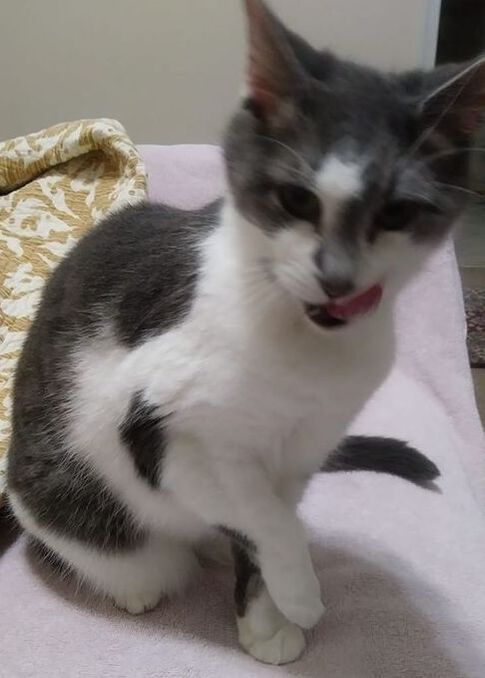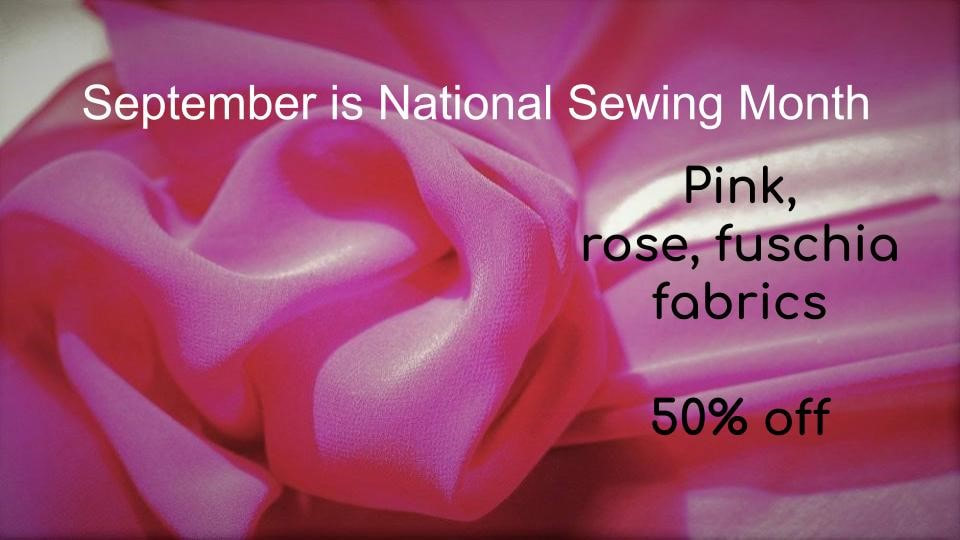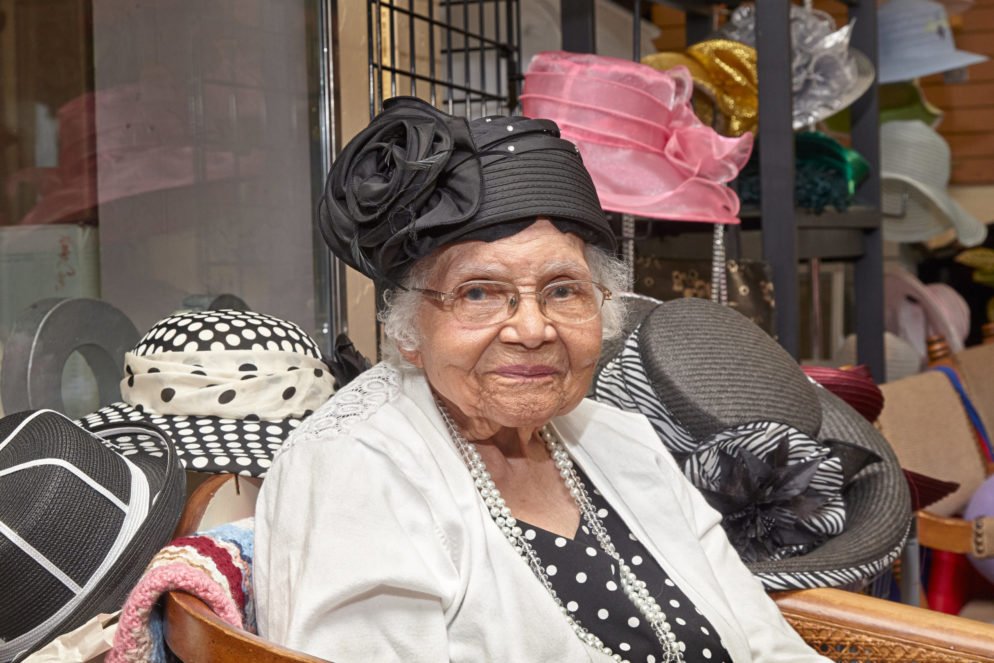|
The color BLUE for you at 50% off through 9/30/19.
Wrap up National Sewing Month with a blue binge! Use the code NSM50 for 50% off our blue fabrics, including beautiful silk chiffons, a modal knit, woolens, and more! More about the color blue here.
0 Comments
 Update: Suki is enjoying her well deserved retirement! This is our store cat, Suki. She is in charge of patrolling the perimeter of the warehouse. She is a rescue, and she's actually 11 years old! She doesn't sit on the fabric, is not even interested in fabric, but she patrols and peers into corners where occasional "outsiders" might stray. She is good at her job! Sometimes she sits on the shipping table, because that's where the action is and she doesn't like to miss out. (Of course when I tried to get a picture she would not cooperate). Store cats and warehouse cats have always been a thing, especially in cities. See this article about the "Beloved store cats of San Francisco." And now there's a crowdsourced map! https://www.sfchronicle.com/sf/article/Do-you-know-these-felines-Map-featuring-the-17523396.php Use code "NSM50" for 50% off selected groupings throughout the month of September, National Sewing Month!
If you follow us on Facebook you have probably noticed that we are rotating the color groups on sale this month. Currently we have "reds" and "purples" on sale. This is partly because we are re-aligning our website to enable our customers to order in fractions for most fabrics. Meanwhile we are expecting new arrivals for the fall and winter seasons. European fabrics typically arrive later than domestic ones, much closer to the season for which they are targeted. Look for more specials and sales as the season progresses, but in the meantime, enjoy our "Color Sales." https://www.fabricsdc.com/national-sewing-month.html Most of our mother of pearl buttons come from Italy, Portugal, and Japan.
But at one time, a town in Iowa was the pearl button capital of the world! From Atlas Obscura: "Muscatine’s pearl button industry hit its peak between 1908 and the ’20s, when factories in the Iowa town produced 1.5 billion buttons, or one-third of the world’s pearl button supply. These buttons were worth $3.3 million, according to the 1910 edition of Encyclopaedia Britannica. But few of us who grew up along the Mississippi, who’ve held those milkweed-grey shells with holes in them, have actually held pearl buttons or heard a cohesive origin story about the industry. To get the definitive history I went to Terry Eagle, the Director of The National Pearl Button Museum at The History and Industry Center, in Muscatine. “The story of the pearl button is a national growth story, a national treasure story, and an environmental lesson,” Eagle says. “And if you don’t believe me now, I’ll prove it to you.”" We can all use some skill polishing, and sometimes just camaraderie and encouragement! Here are some of the approaches you can take to learn or improve a sewing or design skill. Free online wikis and videos Just use your favorite search engine (I use Google) and type in the skill you want to learn or a problem that you have with a current project. Wikihow can be very helpful. There are YouTube videos, of course, but you can also find videos embedded in fabric stores' websites, public television, bloggers, and more. Here is one that a dear customer just shared: Made to Sew Increasingly, the sewing public is expecting more tutorials from the Big 4 pattern companies and other pattern companies. Local instruction Check your local 4H, Cooperative Extension office, adult education, and other city and county resources for inexpensive, structured lessons that range from beginner to more advanced. Other resources might be YMCA, YWCA, and New York's famous 92nd Street Y. Professional instruction Many chapters of American Sewing Guild, Association of Sewing and Design Professionals, and other sewing organizations promote instruction. ASDP offers standards for certification. Quilting and sewing groups For companionship, look for a local group. Quilting and sewing groups range from casual local groups to specialized groups with "missions" such as Quilts of Valor. Churches often have specialized concerns such as womens' shelters, quilts for charity groups, deployed service members, hospitals and elderly people, and more. Bluprint and more subscription lessons Formerly known as Craftsy, Bluprint is subscription based and has an extensive menu of video lessons. Comcast subscribers are able to subscribe directly through their smart tvs on a monthly basis. Free trials are often available. Other websites like Sew Daily have similar online lessons. Some sewing related websites like Pattern Review have tutorial subscriptions. Conferences, expos, and trade shows These meetings are sometimes large with dense displays of sewing machines, fabrics, books, etc. Many times there are specialized classes that you can pay for. This is often a good way to connect with a sewing teacher whose skill set appeals to you and complements your need for instruction. The Original Sewing and Quilt Expo is one. Specialized independent teachers Want to learn how to fit yourself perfectly? You might learn a lot from a teacher like Cynthia Guffey, a favorite of some of our customers. Or go for that goal-oriented intensive class from a teacher like Sarah Veblen. University design programs Many colleges and universities have costume design or fashion design departments. They usually require some basic sewing skills and they may require a portfolio of your projects. University of Maryland, Virginia Commonwealth University, Howard University, and Marymount University are just a few local to us. Check your local universities and colleges. Specialized art and design schools The best design schools are competitive. They usually require some existing knowledge of clothing construction, as well as a portfolio of your ideas. Rhode Island School of Design, Corcoran School of Art, Fashion Institute of Design and Merchandising, and of course who can leave out Parsons and FIT? Many design schools are concentrated on the Eastern seaboard and on the West Coast. It seems that nothing stymies the home sew-er's potential for beautiful, well-fitting clothing more than confusion about pattern sizing. Here are a few pointers.
--Please measure yourself at the bust, waist, and hips. However, if your bra cup size is a C cup or larger, you should measure your chest rather than your full bust. (Research how and why to make a "full bust adjustment"). Write down these measurements. --Try to erase your ready to wear store size from your thinking. These sizes vary greatly from vendor to vendor and have become "vanity sizing" through the years. For example, Jacqueline Kennedy is said to have worn anywhere from size 8 to 12, depending on the designer, but that was then. Now those sizes would be equivalent to today's smallest size labels (00, 0, 2, 4). That is how drastically the measurements on the size labels have changed in ready to wear clothing, while pattern size measurements have remained relatively the same since the 1960's. --Knits are more prevalent than ever. Depending on how fitted (tight or loose) you wear your clothing, the amount of stretch, and the style, you may find that a size small tank top is what appeals to you, even if you would wear size 14 jeans. Wovens follow more conventional fitting rules. --Back to pattern measurements. There are sizing charts used by the pattern manufacturers which could vary from company to company. Consult those for the size pattern closest to your measurements. Simplicity offers additional tips on selecting pattern size with their downloadable pdf. --Take note of the "ease chart" for the patterns you are considering. This will help you to know how much design ease is included. --Once you are ready to fit the pattern to your measurements, take note of the measurements of the actual pattern pieces, which include "wearing ease" and "design ease." You can analyze your own clothing in similar styles and fabrics to determine if the intended "design ease" appeals to you. This part may take some patience, practice, and experience. Do this before you cut into your fashion fabric! --Initially you can "tissue fit" the pattern to your body. --Ideally, the first time we use a pattern, we make a "muslin" or "toile," of an inexpensive fabric, at least of the crucial fitting or styling points. If in doubt, cut larger. |
exqfabrics.comCall, text, or leave a message... 24/7 Archives
June 2023
Categories |







 RSS Feed
RSS Feed